Sycamore Gap tree: The story so far
The Sycamore Gap tree, which once stood in a dip next to Hadrian's Wall in Northumberland, has been chopped down. It was an incredibly popular landmark, but what was so different about it and why did it affect so many people?
What was the Sycamore Gap tree?
Quite simply it was a single sycamore tree growing in a natural dip in the countryside along Hadrian's Wall, close to the village of Once Brewed.
The National Trust, which looks after the site with the Northumberland National Park Authority, said it was planted in the late 1800s by previous landowner John Clayton to be a "feature in the landscape".
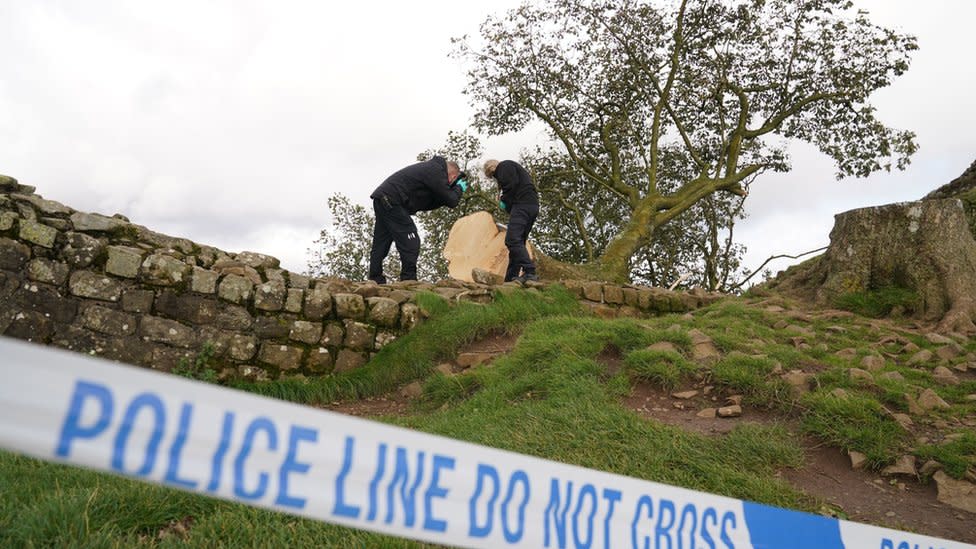
While a popular spot for walkers and photographers due to its unusual setting, it became famous after featuring in the 1991 film Robin Hood: Prince of Thieves starring Kevin Costner. Afterwards it gained the nickname the Robin Hood Tree - although in reality it was some 170 miles (273 km) from Sherwood Forest.
Dan Newman, whose character Wulf hides in the tree and is rescued by the eponymous hero, told the BBC it was the first scene he filmed on his very first day on set.
The film's director Kevin Reynolds said it was "one of the most quintessentially idyllic spots in the world and now it's gone, it's murdered, and for what reason?"
The Northumberland National Park Authority said the site was its "most-photographed spot", and in late 2016 it was crowned English Tree of the Year in the Woodland Trust's awards.
Author LJ Ross, whose second novel was named after the tree, said many creatives "felt inspired" by it.
It was also a focal point along the 84-mile (135km) Hadrian's Wall route between Wallsend, North Tyneside and Bowness-on-Solway, Cumbria.
What happened to the tree?
On the morning of 28 September, 2023, news spread that the tree had been "deliberately" chopped down overnight.
A police investigation was launched and a cordon put in place.
Forensics officers were seen taking measurements and samples from the remains and photographing the area.
One was heard saying: "In 31 years of forensics I've never examined a tree."
On 30 April 2024, two men in their 30s from the Cumbria area were charged with criminal damage of the tree, and criminal damage to Hadrian's Wall, Northumbria Police said.
They are due to appear at Newcastle Magistrates' Court on 15 May.
The force has previously confirmed that a man aged in his 60s and a 16-year-old boy, who were also arrested, would face no further action.
How did people react?
The toppling of the tree led to an outpouring of anger and astonishment.
Hexham Conservative MP Guy Opperman said people he had spoken with were "utterly stunned" and "devastated" at the damage, and described the sycamore as a "symbol of the North East".

Hairy Biker Si King, who grew up in County Durham, posted on social media that a "sentinel of time and elemental spirit of Northumberland" had been "murdered".
People were also keen to share their memories of the tree and why it was so special to them.
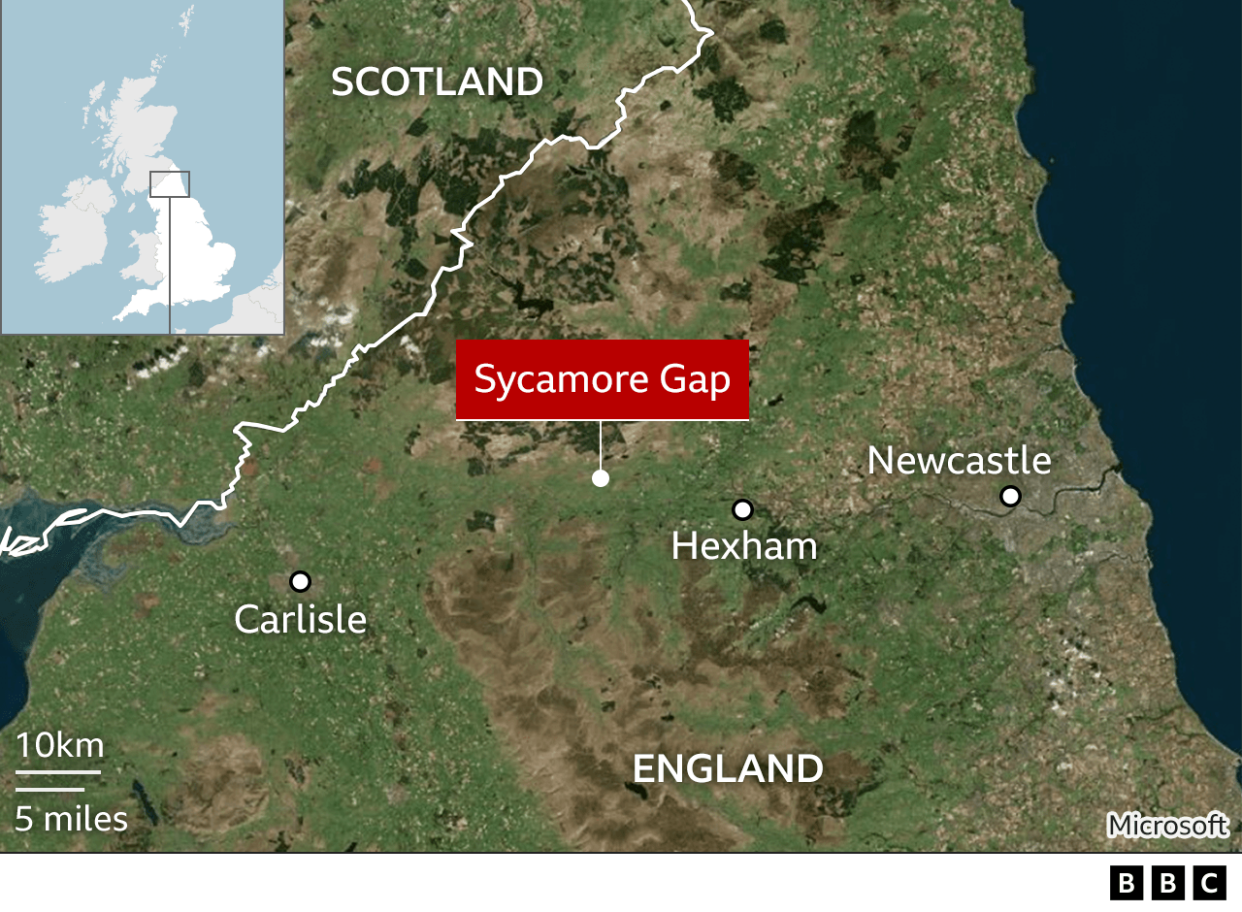
Alice Whysall, from Brampton, Cumbria, believed she may have taken the final photograph of the tree the previous evening, as she stopped there in the rain while on a hike.
She said it was "such an emotional thing to have seen it in its final hours".
It was also the scene of marriage proposals, sentimental moments and the scattering of ashes.
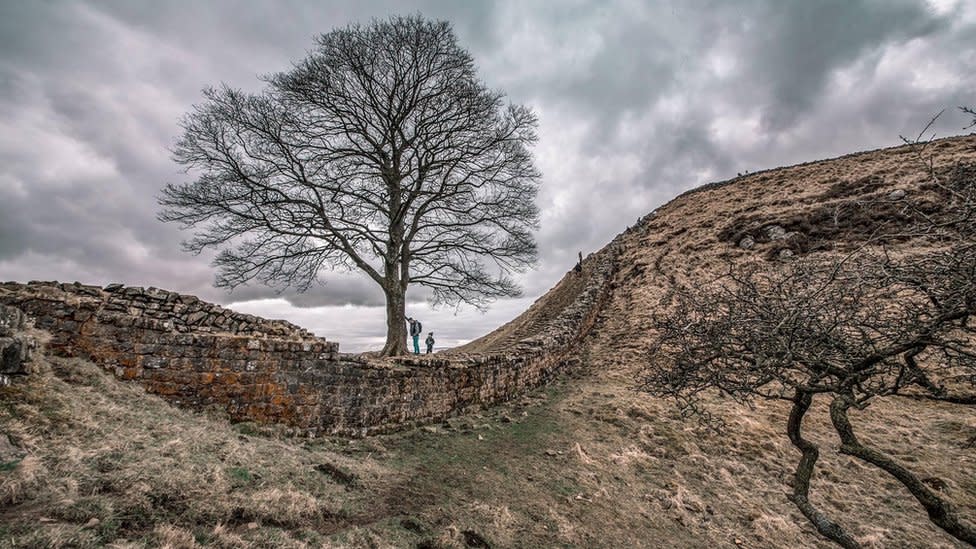
The outpouring of emotion led to impromptu poems about its untimely end and photographs from every angle, and every season, were shared.
It was "a place where truly one could be set free," wrote Harriet Robinson.
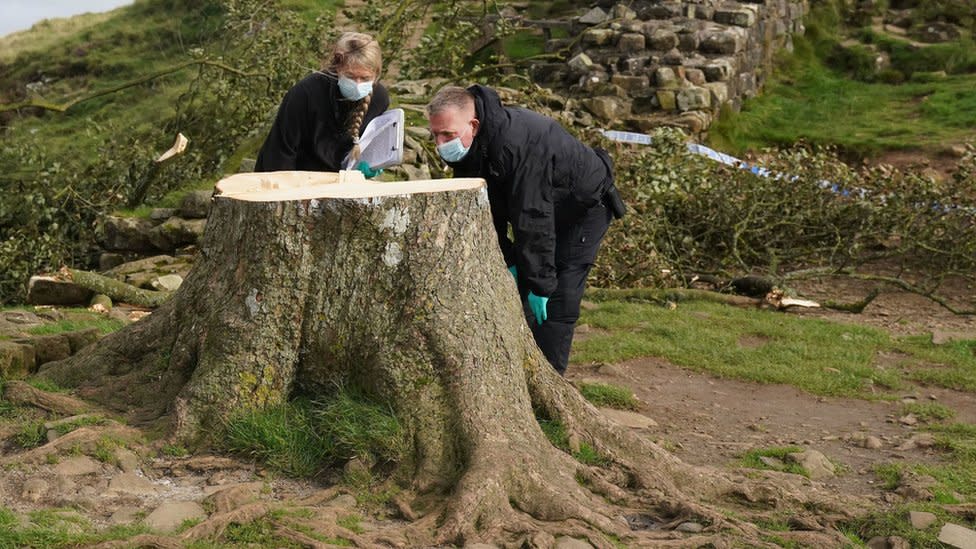
What will happen to the tree?
The trunk of the tree was removed on 12 October, and because it was so big it was cut into large pieces so it could be taken away by crane.
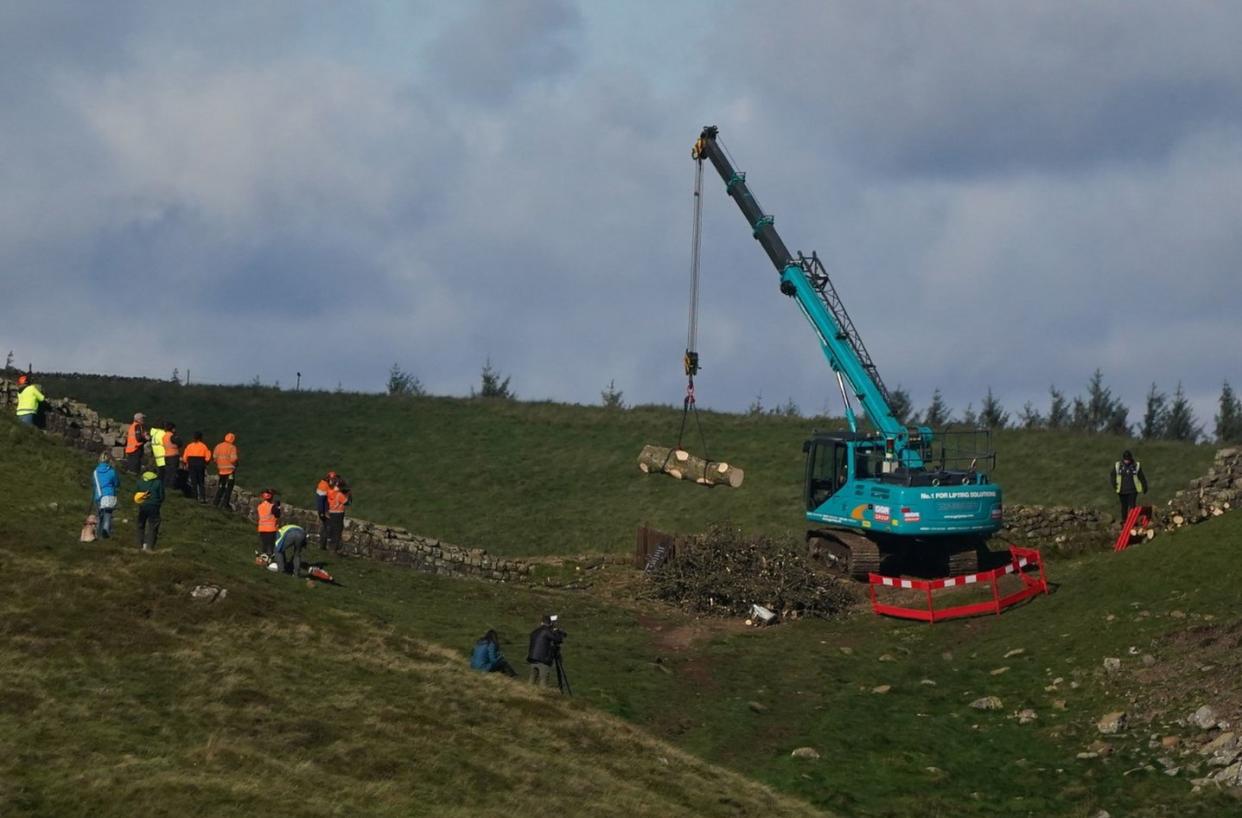
In December, the National Trust confirmed that seeds collected from the tree would be used to grow new saplings, and work is being carried out at its rare plant propagation nursery.
In March, it was confirmed new life had sprung from the rescued seeds and twigs of the Sycamore Gap tree.
The National Trust is still deciding what to do with the shoots once they are strong enough.
While it is hoped that the original tree will regrow from its trunk, it will take up to three years before experts know if this is possible, the trust said.
Plans have also been announced to put the largest section of tree on public display at The Sill, a visitor attraction near the site, in September 2024.
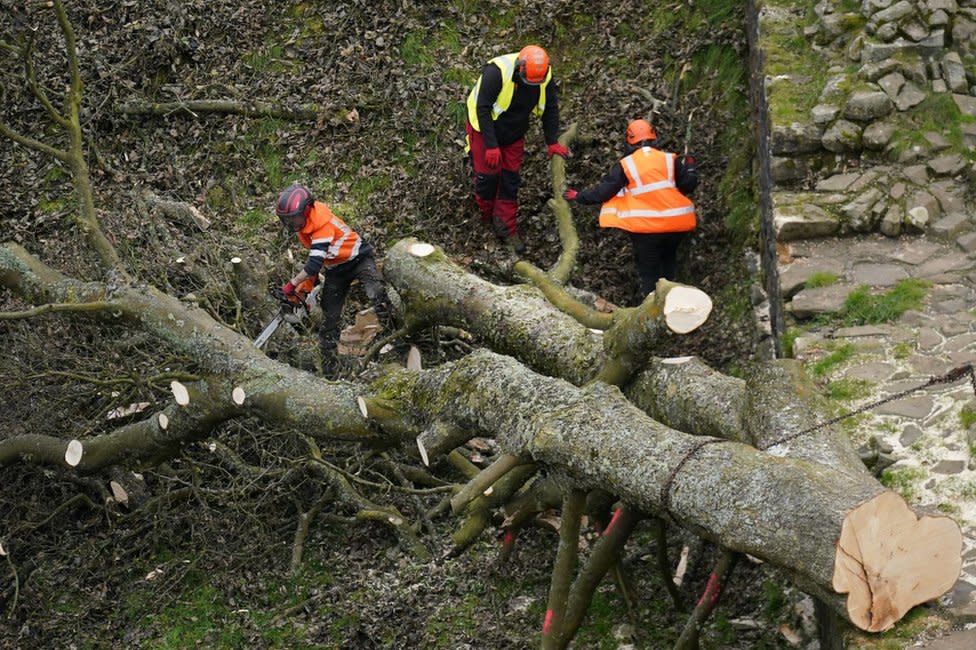
People have also been keen to lend a helping hand.
A fundraising site has been set up, with more than £4,000 raised to help to "improve and rejuvenate" the area around the stump.
The National Trust has advised people to "treat the stump with respect", and it has encouraged people to share their ideas.
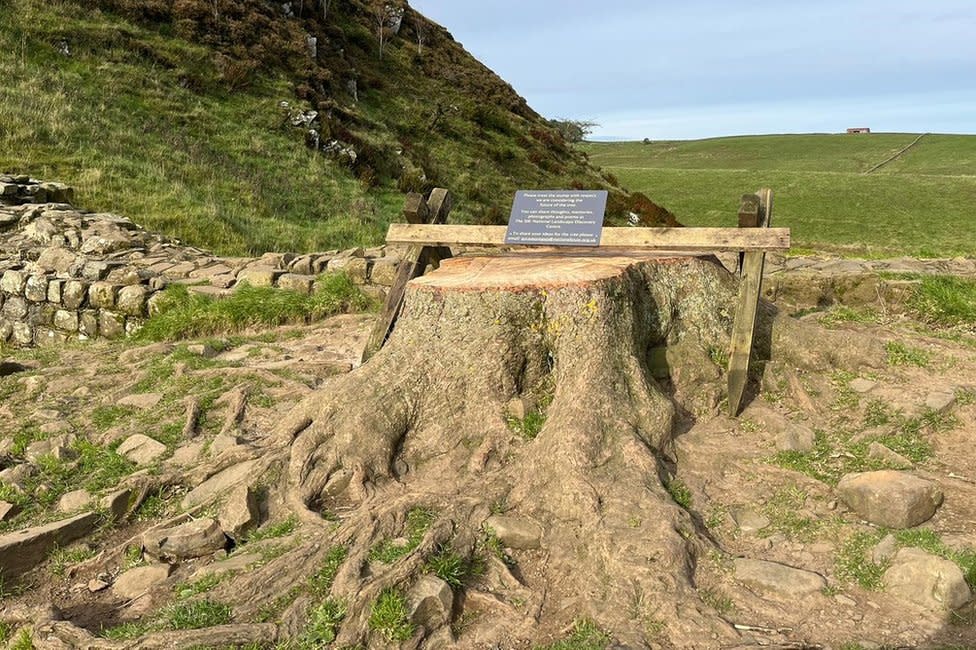
However, a sapling which was planted nearby in a bid to restore "hope" was removed by authorities, as the site has Unesco World Heritage status.
National Trust manager Andrew Poad said the stump was "healthy" and they might be able to coppice the tree, where new shoots grow from the trunk's base, but it could take up to 200 years to get back to what it once was.
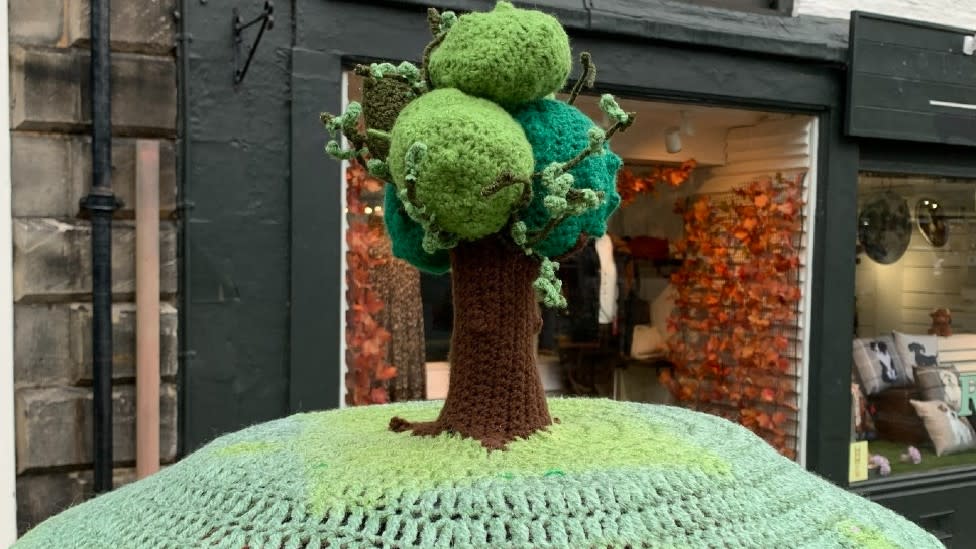
There have also been suggestions about what to do with the remaining wood. The High Sheriff of Northumberland, Diana Barkes, suggested that something could be created from it "for people to come and remember the tree and remember their loved ones".
Thousands of ideas have been sent to officials including turning the trunk into benches or sculptures.
Elsewhere, other projects are benefiting from the loss. In North Yorkshire, artist Lucy Pittaway, who painted the Sycamore Gap tree, has planted trees at the Swinton Estate for every print copy she sells, hoping a new woodland will revive the area.
Follow BBC North East & Cumbria on X (formerly Twitter), Facebook and Instagram. Send your story ideas to northeastandcumbria@bbc.co.uk
